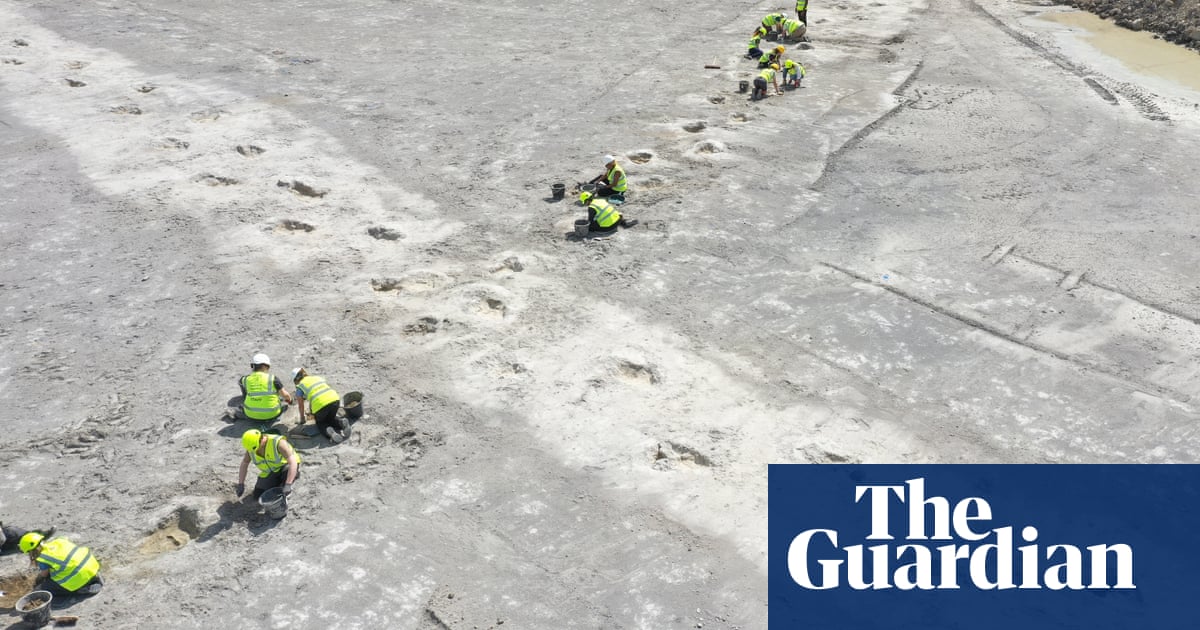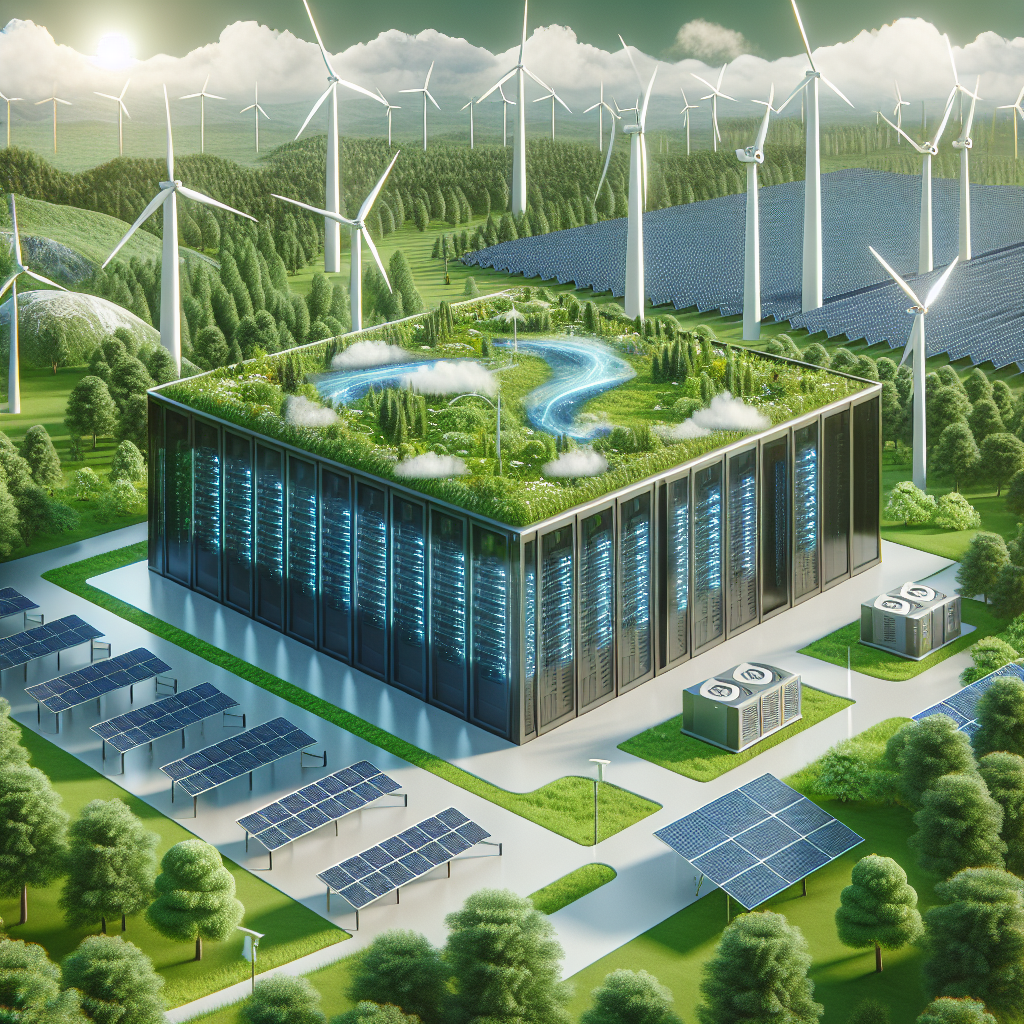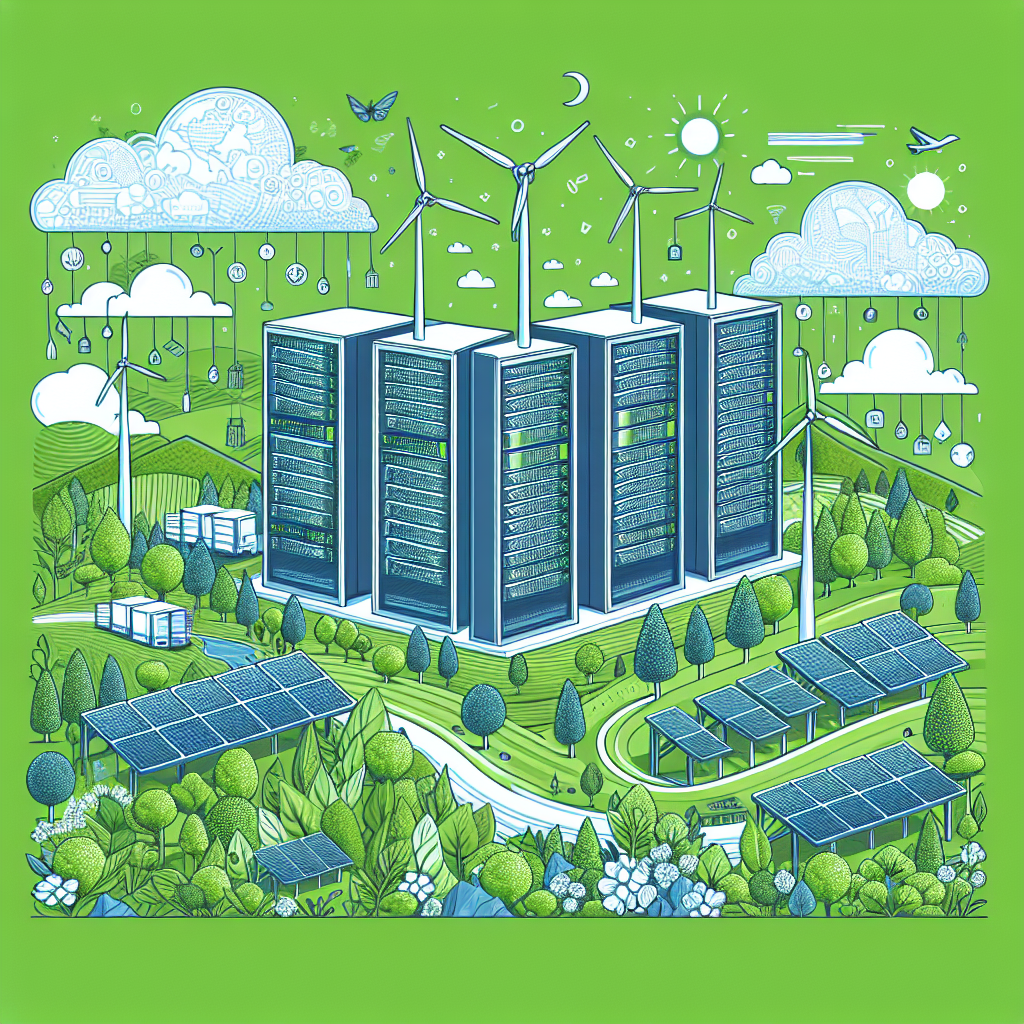Your cart is currently empty!
Tag: Footprints

The Environmental Benefits of Cloud Computing: Reducing Carbon Footprints
Cloud computing has become increasingly popular in recent years, offering businesses and individuals the ability to store and access data and applications over the internet rather than on physical hardware. While the convenience and cost-effectiveness of cloud computing are widely acknowledged, another significant benefit that often goes overlooked is its positive impact on the environment.One of the main environmental benefits of cloud computing is its ability to reduce carbon footprints. Traditional on-premise data centers require a significant amount of energy to operate, leading to high levels of carbon emissions. In contrast, cloud computing providers can achieve economies of scale by consolidating data storage and processing in large, energy-efficient data centers. These data centers are designed to maximize energy efficiency, using advanced cooling and power management systems to minimize energy consumption.
By using cloud computing services, businesses can reduce their energy consumption and carbon emissions significantly. In fact, a study by the Lawrence Berkeley National Laboratory found that moving business applications to the cloud can reduce energy consumption by up to 87% and carbon emissions by up to 84%. This is because cloud providers can optimize their data centers for energy efficiency, using renewable energy sources and innovative technologies to minimize their environmental impact.
Another environmental benefit of cloud computing is its ability to promote virtualization and resource sharing. Virtualization allows multiple virtual servers to run on a single physical server, maximizing resource utilization and reducing the need for additional hardware. This not only saves energy and reduces carbon emissions but also helps to minimize electronic waste by extending the lifespan of existing hardware.
Furthermore, cloud computing enables businesses to scale their IT infrastructure up or down based on their needs, reducing the amount of unused capacity and associated energy consumption. This flexibility allows businesses to adapt to changing demands without the need for additional hardware, further reducing their environmental impact.
In addition to reducing carbon footprints, cloud computing can also help businesses achieve their sustainability goals by providing tools and resources for monitoring and managing their energy consumption. Cloud-based analytics platforms can help businesses track their energy usage and identify opportunities for improvement, enabling them to make informed decisions that can further reduce their environmental impact.
Overall, the environmental benefits of cloud computing are significant and should not be overlooked. By leveraging the energy efficiency, resource sharing, and scalability of cloud computing services, businesses can reduce their carbon footprints and contribute to a more sustainable future. As the demand for cloud computing continues to grow, it is essential for businesses to consider the environmental implications of their IT infrastructure and take advantage of the opportunities that cloud computing offers to reduce their environmental impact.

Biggest trackway of dinosaur footprints found in Oxfordshire quarry | Dinosaurs
Gary Johnson was clearing clay with a digger at the Oxfordshire quarry where he works when he hit an unexpected bump in the limestone surface.
“I thought, it’s just an abnormality in the ground,” he said. “But then it got to another, three metres along, and it was hump again, and then it went another three metres, hump again.”
What Johnson had discovered was part of an enormous dinosaur trackway dating to nearly 166m years ago, when the quarry was a warm, shallow lagoon crisscrossed by the huge creatures.
“I thought I’m the first person to see them,” Johnson, a worker at Dewars Farm Quarry, told the BBC. “And it was so surreal – a bit of a tingling moment, really.”
Researchers have now unearthed about 200 large footprints at the site, making this the biggest dinosaur trackway ever found in Britain. The tracks are thought to have been made by two types of dinosaur: the herbivorous cetiosaurus, a sauropod that walked on four legs, and the smaller carnivorous megalosaurus.
So far, five separate trackways have been found stretching up to 150 metres in length, and experts from the universities of Oxford and Birmingham believe they could extend much further as only part of the quarry has been excavated.
“This is one of the most impressive track sites I’ve ever seen, in terms of scale, in terms of size of the tracks,” Prof Kirsty Edgar, a micropalaeontologist from the University of Birmingham, told the BBC. “You can step back in time and get an idea of what it would have been like, these massive creatures just roaming around, going about their own business.”
From left: Kirsty Edgar, Richard Butler, Duncan Murdock, Alice Roberts and Emma Nicholls with dinosaur footprints found at the quarry. Photograph: University of Birmingham/PA After Johnson’s initial discovery, a team of more than 100 scientists, students and volunteers joined an excavation of the site last summer, which will feature on the BBC series Digging for Britain next week. As well as making plaster casts of the prints, the project recorded 20,000 photographs and built detailed 3D models of the site using aerial drones.
The trackways connect to discoveries made in the area in 1997, where limestone quarrying revealed more than 40 sets of footprints. One area of the site even reveals where the paths of a cetiosaurus and megalosaurus crossed, with the sauropod having got there first. The front edge of its large, round footprint is slightly squashed down by the three-toed megalosaurus walking on top of it.
Dr Duncan Murdock from the University of Oxford said: “Knowing that this one individual dinosaur walked across this surface and left exactly that print is so exhilarating. You can sort of imagine it making its way through, pulling its legs out of the mud as it was going.”
The megalosaurus print is “almost like a caricature of a dinosaur footprint”, Dr Emma Nicholls, a vertebrate palaeontologist from the University of Oxford Museum of Natural History, told the BBC. “It’s what we call a tridactyl print. It’s got these three toes that are very, very clear in the print.”
The creatures were agile hunters, she said. “The whole animal would have been 6 to 9 metres in length. They were the largest predatory dinosaurs that we know of in the Jurassic period in Britain.”
An artist’s impression issued by the University of Birmingham of how a megalosaurus and cetiosaurus may have created the footprints. Photograph: Mark Witton/PA Prof Richard Butler, a palaeobiologist at the University of Birmingham, said dinosaur footprints provided a snapshot of the life of the animal. “The really lovely thing about a dinosaur footprint, particularly if you have a trackway, is that it is a snapshot in the life of the animal,” he said.
“You can learn things about how that animal moved. You can learn exactly what the environment that it was living in was like. So tracks give us a whole different set of information that you can’t get from the bone fossil record.”
Why these particular trackways were preserved remains unknown. “Something must have happened to preserve these in the fossil record,” Butler said. “We don’t know exactly what, but it might be that there was a storm event that came in, deposited a load of sediments on top of the footprints, and meant that they were preserved rather than just being washed away.”
Exciting news for dinosaur enthusiasts! A team of palaeontologists has recently discovered the biggest trackway of dinosaur footprints in an Oxfordshire quarry. The trackway, believed to have been made by a large herd of dinosaurs, provides valuable insight into the behavior and movement patterns of these ancient creatures.The footprints, which date back to the Jurassic period, are incredibly well-preserved and offer a rare glimpse into the lives of dinosaurs millions of years ago. The discovery has sparked excitement among experts and researchers, who are now working to study and analyze the trackway in more detail.
This groundbreaking discovery is not only a significant find for the field of palaeontology, but also a thrilling opportunity for the public to learn more about the fascinating world of dinosaurs. Stay tuned for more updates on this incredible discovery! #Dinosaurs #FossilDiscovery #OxfordshireQuarry #JurassicPeriod
Tags:
- Dinosaur footprints
- Oxfordshire quarry
- Prehistoric trackway
- Paleontology discovery
- Fossilized footprints
- Dinosaur excavation
- Jurassic era
- Ancient reptiles
- UK paleontology
- Oxfordshire dinosaurs
#Biggest #trackway #dinosaur #footprints #Oxfordshire #quarry #Dinosaurs

Footprints – Decal Sticker – Multiple Colors & Sizes – ebn6129

Footprints – Decal Sticker – Multiple Colors & Sizes – ebn6129
Price : 4.95
Ends on : N/A
View on eBay
Looking to add a touch of whimsy to your car, laptop, or water bottle? Check out our Footprints decal sticker in multiple colors and sizes! Perfect for nature lovers, hikers, or anyone who enjoys a good adventure. Get yours today and leave your mark wherever you go. #footprints #decals #stickers #adventure #naturelovers
#Footprints #Decal #Sticker #Multiple #Colors #Sizes #ebn6129,medium room
The Footprints of God: A Novel
Price: $1.99
(as of Dec 28,2024 01:16:06 UTC – Details)
ASIN : B000FC0OOA
Publisher : Scribner; Reissue edition (August 12, 2003)
Publication date : August 12, 2003
Language : English
File size : 2276 KB
Text-to-Speech : Enabled
Screen Reader : Supported
Enhanced typesetting : Enabled
X-Ray : Enabled
Word Wise : Enabled
Print length : 560 pages
Page numbers source ISBN : 1982122323Customers say
Customers find the book engaging and suspenseful. They praise the writing style as well-executed and appreciate the philosophical content and character development. The book holds their attention from beginning to end, keeping them engaged until the end. However, some feel the reading pace is slow.
AI-generated from the text of customer reviews
“The Footprints of God: A Novel”Join us on a journey through the pages of “The Footprints of God,” a captivating novel that delves into the mysteries of faith, destiny, and the power of belief. Follow protagonist Sarah as she discovers a series of unexplainable footprints that lead her on a quest to unravel the secrets of the divine.
As Sarah delves deeper into the enigma of the footprints, she encounters a cast of intriguing characters who challenge her perceptions of reality and push her to confront her own beliefs. With each step she takes, Sarah is confronted with profound questions about the nature of faith and the existence of a higher power.
“The Footprints of God” is a thought-provoking and compelling novel that will keep you turning the pages until the very end. Join us on this spiritual journey and discover the footprints of God in your own life.
#Footprints #God
Cutting Costs and Carbon Footprints: The Benefits of Energy-Efficient Data Centers
In today’s digital age, data centers are the backbone of the internet, hosting and processing massive amounts of data to keep our online world running smoothly. However, the energy consumption of these data centers is a growing concern, as they can be incredibly power-hungry and contribute to a significant carbon footprint.To combat these issues, many companies are turning to energy-efficient data centers, which not only help to reduce costs but also have a positive impact on the environment. By implementing energy-saving technologies and practices, data centers can significantly decrease their energy consumption and carbon emissions.
One of the primary benefits of energy-efficient data centers is cost savings. By reducing energy consumption, companies can lower their electricity bills and operating costs. This can have a significant impact on the bottom line, especially for organizations with large data centers that consume a substantial amount of power.
In addition to cost savings, energy-efficient data centers also have a positive impact on the environment. By reducing energy consumption and carbon emissions, companies can help to combat climate change and reduce their overall environmental footprint. This is becoming increasingly important as the effects of climate change become more apparent and urgent action is needed to mitigate its impact.
There are a variety of ways that data centers can improve their energy efficiency. This includes using energy-efficient hardware, implementing virtualization and consolidation techniques, optimizing cooling systems, and utilizing renewable energy sources. By taking these steps, companies can reduce their energy consumption and carbon footprint while still meeting their data processing needs.
Overall, the benefits of energy-efficient data centers are clear. Not only do they help to cut costs and improve the bottom line, but they also have a positive impact on the environment by reducing carbon emissions. As more companies recognize the importance of sustainability and energy efficiency, the shift towards greener data centers is likely to continue to grow. By investing in energy-efficient technologies and practices, companies can not only save money but also help to create a more sustainable future for generations to come.

The Power of Green: How Data Centers are Reducing Carbon Footprints
As the world becomes increasingly aware of the impact of climate change, many industries are making efforts to reduce their carbon footprints. One such industry that is making strides in sustainability is the data center industry. Data centers, which are facilities that house computer systems and associated components, consume a significant amount of energy and contribute to carbon emissions. However, with advancements in technology and a growing focus on sustainability, data centers are finding ways to reduce their environmental impact.One of the ways data centers are reducing their carbon footprints is by implementing energy-efficient technologies. This includes using energy-efficient servers, cooling systems, and lighting. By using more efficient equipment, data centers can reduce their energy consumption and, in turn, decrease their carbon emissions. Additionally, data centers are also utilizing renewable energy sources such as solar and wind power to further reduce their reliance on fossil fuels.
Another way data centers are reducing their carbon footprints is by implementing innovative cooling techniques. Cooling systems are a major source of energy consumption in data centers, as they are necessary to keep servers from overheating. However, data centers are now exploring more sustainable cooling methods, such as using outside air or water for cooling instead of traditional air conditioning units. By utilizing these alternative cooling methods, data centers can significantly reduce their energy usage and carbon emissions.
Furthermore, data centers are also focusing on improving their overall operational efficiency. This includes optimizing server utilization, consolidating servers, and improving data center design to minimize energy consumption. By streamlining operations and maximizing efficiency, data centers can reduce their environmental impact while also saving on energy costs.
In addition to implementing energy-efficient technologies and practices, data centers are also investing in carbon offset programs. These programs allow data centers to invest in projects that reduce carbon emissions, such as reforestation or renewable energy projects. By participating in carbon offset programs, data centers can balance out their carbon emissions and work towards achieving carbon neutrality.
Overall, the data center industry is making significant strides in reducing its carbon footprint and becoming more sustainable. By implementing energy-efficient technologies, innovative cooling techniques, operational efficiencies, and carbon offset programs, data centers are working towards a greener future. As the demand for data centers continues to grow, it is essential for the industry to prioritize sustainability and continue to find ways to reduce its environmental impact. The power of green is evident in the data center industry, as it strives to become more environmentally friendly and contribute to a healthier planet.

Reducing Carbon Footprints: The Environmental Impact of Data Center Sustainability
In today’s digital age, data centers play a crucial role in storing and managing vast amounts of information for businesses, organizations, and individuals. However, the environmental impact of data centers is significant, with these facilities consuming massive amounts of energy and emitting high levels of carbon dioxide. In fact, data centers are estimated to account for around 1-2% of global electricity consumption and produce roughly the same amount of carbon emissions as the aviation industry.As the demand for data storage and processing continues to grow, it is more important than ever for data centers to prioritize sustainability and reduce their carbon footprints. Fortunately, there are several strategies that data centers can implement to lessen their environmental impact and operate more sustainably.
One key way to reduce the carbon footprint of data centers is by improving energy efficiency. This can be achieved through the use of energy-efficient hardware, such as servers and cooling systems, and by optimizing the layout and design of the facility to minimize energy waste. Additionally, data centers can implement advanced cooling technologies, such as liquid cooling or free cooling, to reduce the amount of electricity needed to keep the servers at optimal temperatures.
Another important strategy for reducing carbon emissions is to increase the use of renewable energy sources. Data centers can invest in solar, wind, or hydroelectric power to generate clean energy on-site or purchase renewable energy credits to offset their electricity consumption. By shifting towards renewable energy sources, data centers can significantly decrease their carbon footprint and contribute to the fight against climate change.
Furthermore, data centers can also implement sustainable practices in their operations, such as recycling electronic waste, using energy-efficient lighting, and implementing water-saving measures. By adopting a holistic approach to sustainability, data centers can minimize their environmental impact and demonstrate their commitment to corporate social responsibility.
In conclusion, reducing the carbon footprint of data centers is essential for mitigating the environmental impact of these facilities and combatting climate change. By implementing energy-efficient technologies, increasing the use of renewable energy sources, and adopting sustainable practices, data centers can operate more efficiently and responsibly. It is crucial for data center operators, customers, and stakeholders to work together to promote sustainability and create a greener future for the digital economy.

Cutting Costs and Carbon Footprints: The Benefits of Data Center Energy Efficiency
In today’s digital age, data centers play a crucial role in storing, processing, and managing vast amounts of information. However, the energy consumption of these facilities is a growing concern, as they can be significant contributors to carbon emissions. As businesses strive to become more sustainable and reduce their environmental impact, focusing on data center energy efficiency is an important step towards achieving these goals.One of the key benefits of improving data center energy efficiency is the cost savings that can be achieved. By reducing the amount of electricity needed to power and cool servers, businesses can lower their utility bills and improve their bottom line. In fact, a study by the U.S. Department of Energy found that implementing energy-efficient practices in data centers can result in savings of up to 20-30% on energy costs.
In addition to cost savings, improving data center energy efficiency can also help businesses reduce their carbon footprint. Data centers are known for their high energy consumption, and the electricity used to power these facilities is often generated from fossil fuels, which release greenhouse gases into the atmosphere. By implementing energy-efficient practices such as using energy-efficient servers, optimizing cooling systems, and implementing virtualization technologies, businesses can lower their energy consumption and reduce their carbon emissions.
Furthermore, improving data center energy efficiency can also enhance the reliability and performance of a company’s IT infrastructure. By reducing the amount of heat generated by servers, businesses can improve the overall efficiency and lifespan of their equipment. This can lead to fewer equipment failures, reduced downtime, and improved performance, ultimately benefiting the business’s operations and bottom line.
There are a variety of strategies that businesses can implement to improve data center energy efficiency. These include upgrading to energy-efficient servers and storage devices, optimizing cooling systems, implementing virtualization technologies, and using energy management software to monitor and control energy usage. By taking these steps, businesses can not only cut costs and reduce their carbon footprint but also improve the reliability and performance of their IT infrastructure.
In conclusion, improving data center energy efficiency is a win-win for businesses looking to cut costs and reduce their environmental impact. By implementing energy-efficient practices, businesses can lower their energy bills, reduce their carbon emissions, and improve the reliability and performance of their IT infrastructure. Investing in data center energy efficiency is not only a smart business decision but also a step towards creating a more sustainable future.

Reducing Carbon Footprints: How Data Centers Can Lead the Charge in Sustainability
In today’s world, the issue of climate change is becoming increasingly urgent. As the demand for technology and data storage continues to grow, so too does the impact of data centers on the environment. Data centers are responsible for a significant amount of carbon emissions, as they require massive amounts of energy to power and cool the servers that store and process data.However, data centers also have the potential to be leaders in sustainability and reduce their carbon footprints. By implementing energy-efficient practices and investing in renewable energy sources, data centers can significantly decrease their environmental impact.
One key way data centers can reduce their carbon footprints is by improving their energy efficiency. This can be achieved through measures such as upgrading to more efficient servers, optimizing cooling systems, and implementing virtualization techniques to reduce the number of physical servers needed. By reducing energy consumption, data centers can lower their carbon emissions and operating costs.
Another important strategy for data centers to lead the charge in sustainability is by investing in renewable energy sources. Many data centers are now turning to solar, wind, and hydroelectric power to meet their energy needs. By sourcing electricity from renewable sources, data centers can drastically reduce their carbon footprints and support the transition to a clean energy future.
In addition to energy efficiency and renewable energy, data centers can also reduce their carbon footprints by implementing sustainable practices in other areas of their operations. This can include recycling electronic waste, using energy-efficient lighting, and promoting telecommuting to reduce the need for physical office space.
Overall, data centers have the opportunity to lead the charge in sustainability and set an example for other industries to follow. By implementing energy-efficient practices, investing in renewable energy sources, and adopting sustainable operations, data centers can significantly reduce their carbon footprints and help combat climate change. It is essential for data centers to prioritize sustainability and take proactive steps to protect the environment for future generations.
